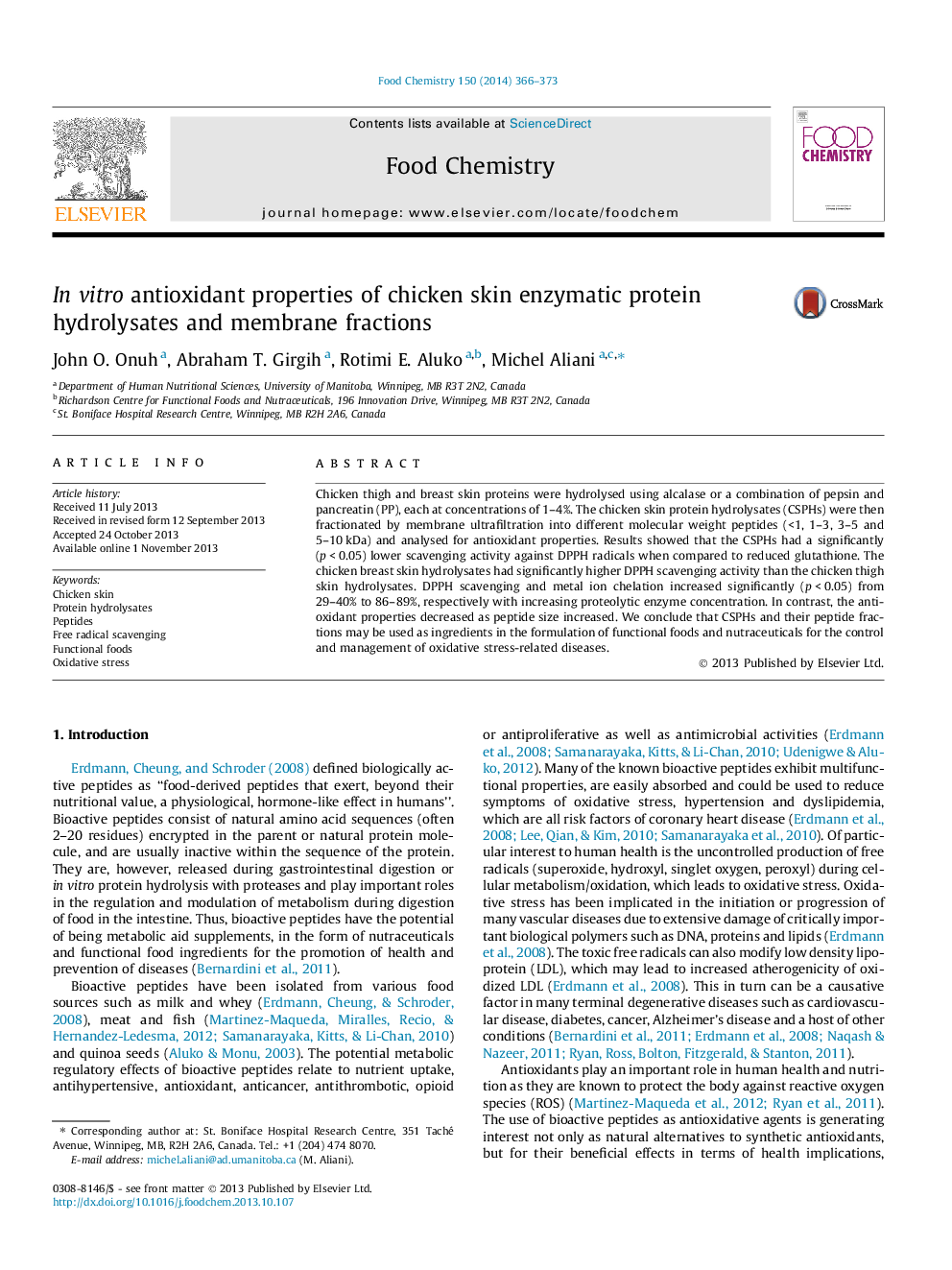| Article ID | Journal | Published Year | Pages | File Type |
|---|---|---|---|---|
| 7598939 | Food Chemistry | 2014 | 8 Pages |
Abstract
Chicken thigh and breast skin proteins were hydrolysed using alcalase or a combination of pepsin and pancreatin (PP), each at concentrations of 1-4%. The chicken skin protein hydrolysates (CSPHs) were then fractionated by membrane ultrafiltration into different molecular weight peptides (<1, 1-3, 3-5 and 5-10 kDa) and analysed for antioxidant properties. Results showed that the CSPHs had a significantly (p < 0.05) lower scavenging activity against DPPH radicals when compared to reduced glutathione. The chicken breast skin hydrolysates had significantly higher DPPH scavenging activity than the chicken thigh skin hydrolysates. DPPH scavenging and metal ion chelation increased significantly (p < 0.05) from 29-40% to 86-89%, respectively with increasing proteolytic enzyme concentration. In contrast, the antioxidant properties decreased as peptide size increased. We conclude that CSPHs and their peptide fractions may be used as ingredients in the formulation of functional foods and nutraceuticals for the control and management of oxidative stress-related diseases.
Keywords
Related Topics
Physical Sciences and Engineering
Chemistry
Analytical Chemistry
Authors
John O. Onuh, Abraham T. Girgih, Rotimi E. Aluko, Michel Aliani,
